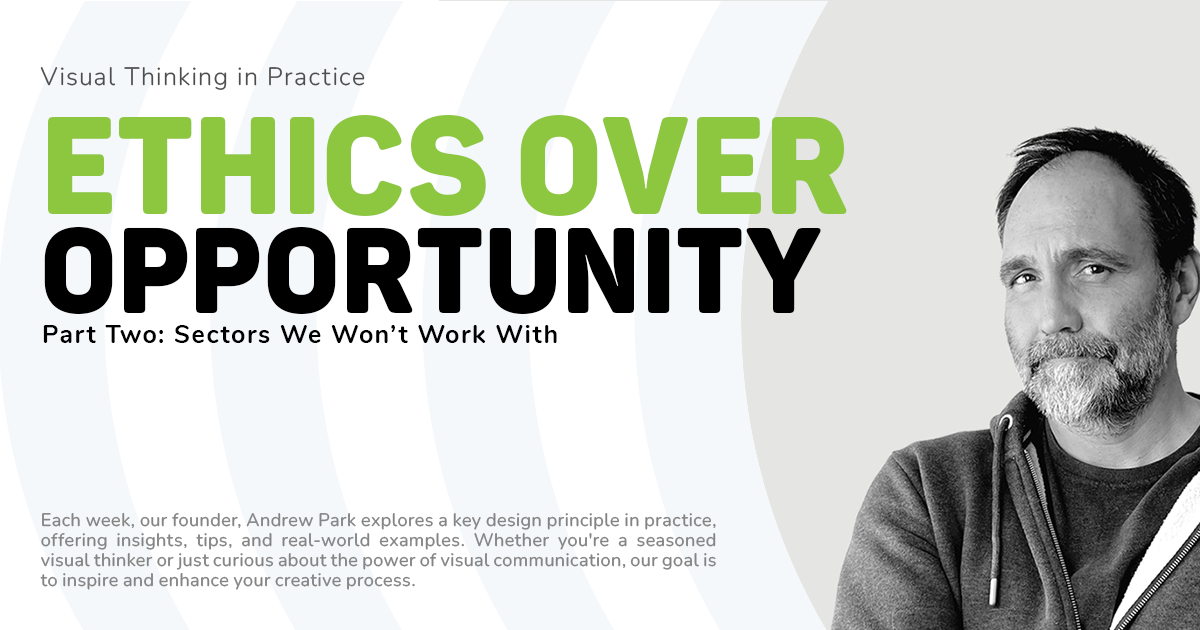Once upon a time in the bustling world of the internet, where content is king and attention is currency, a new hero emerged from the shadows. This hero wasn't a caped crusader, but rather a concise, compelling force known as the Explainer Video. With the power to distill complex ideas into digestible bites, it quickly became the darling of marketers and educators alike.
But why? What gave this hero the edge that allowed it to transform comms and marketing forever?
The Statistical Symphony of Success
The prevalence of explainer videos can no longer be seen as a mere trend; it's a well-established strategy backed by impressive statistics. According to a survey by Wyzowl, 91% of people have watched an explainer video to learn more about a product or service. This stat underlines the fact that in our fast-paced world, consumers appreciate being able to understand complex concepts quickly and in an entertaining format. Furthermore, HubSpot's research highlights that 54% of consumers want to see more video content from brands they support.
The Conversion Catalyst
But explainer videos are not just about comprehension; they're a potent tool for conversion. Animoto's data reveals that 93% of businesses landed a new customer because of a video on social media. And, the inclusion of a video on a landing page can boost conversion rates by up to 80%, according to Unbounce. These numbers are a testament to the power of video in the buyer's journey.

The SEO Booster
The reach of explainer videos also extends to search engine optimization (SEO). Moovly states that you're 53 times more likely show up first on Google if you have a video embedded on your website. Since Google's algorithms prioritize content that engages users, videos are a golden ticket to better rankings and increased visibility.
Video’s Takeover Of The Internet
Year on year, video’s impact on internet usage has increased! As of 2022, Sandvine had found video usage had grown in popularity so much it made up 65% of all internet traffic. That was a 24% increase on the previous year, highlighting the ever increasing demand by consumers and internet users for video content.
The story of explainer videos is one of rapid ascension, driven by our innate love for stories and simplicity. In the kingdom of content, explainer videos have carved out a realm where they reign supreme, not just as a medium of choice but as a strategic imperative for anyone wishing to communicate effectively in the digital age.
As we continue to ride the waves of innovation, one thing remains certain: explainer videos will continue to turn complex narratives into compelling tales of understanding and action. It’s a wave we’ve been riding for over 20 years; creating videos for clients all over the world and innovating in the explainer video sector. Join us on it by booking a call or contacting us to ask any questions you may have and to discover how your project could work as an explainer video!
In the modern workplace, where attention spans are short, and information overload is common, utilizing innovative internal communication strategies is crucial. This article explores creative internal comms ideas, focusing on the power of animated explainer videos and whiteboard animations.
Often the very first books we encounter are picture books, our first introduction to the power of rich visual language. While our books change, the power of this language doesn’t. We’ve reflected on visual language, from picture books to explainer videos and whiteboard animation.
Whether it's making complex ideas feel simple or dry subjects feel engaging, our mission is to democratise knowledge. For over twenty years, we’ve been making this mission a reality, working on whiteboard explainer videos for clients across sectors ranging from education and health to international law and energy.
The best bit of our job is working with clients who have big ideas and complex messages. We’re always ready to make a complicated message feel relatable and understandable or help a visionary get their message out to the masses.
As pioneers of whiteboard animation videos, we’re proud of its ability to make the complex simple and share information far and wide. We want to share its explainer and storytelling superpowers with as many people as possible, but to quote a modern-day classic, ‘with great power comes great responsibility.’ That sometimes means saying ‘no’.
In today’s digital era, explainer videos have become indispensable tools for businesses, educators, and creatives to convey complex ideas in a clear and engaging manner. These videos, whether animated or utilizing techniques like whiteboard animation, captivate audiences and simplify intricate concepts.
We see whiteboard animation as a way of democratising knowledge and sharing the ideas that help us all understand and build a better, fairer world. It is packed with educational and visual storytelling tools that allow us to connect with viewers as we make even the biggest ideas accessible and understandable.
What’s the biggest hype narrative you’ve fallen for recently? Drop it below—no judgment. We’ve all bought something at 11 pm thinking it was genius, only to regret it by morning. (Although the Velcro drain unblocker is the shit!)
The Parker Probe isn’t just a shiny example of what humans can achieve when they stop arguing on X for five minutes. It’s also a reminder that big problems—whether they’re cosmic or corporate—need both boldness and a plan.
When we strip away the layers of imposter syndrome, it often boils down to storytelling—about who we are, what we’ve done, and where we’re headed. The narratives we tell ourselves shape our reality, and reframing those stories can unlock a healthier sense of self-worth.
Facebook and Instagram are going “back to their roots” of free expression. Because, clearly, what the internet desperately needed in 2025 was more rucks.
Watching The Traitors is like observing a high-stakes version of a spider weaving its web. Every accusation, every alliance, every teary-eyed confession pulls on the delicate threads of trust until the whole thing collapses in a heap of suspicion.
Ah, New Year’s resolutions. The annual tradition where we collectively trick ourselves into believing we’re only one heroic declaration away from becoming flawless human beings. This year, this will be the year we shed those bad habits like a moulting snake. Right? Wrong!
If you could pin down the essence of truth, could you draw it? That’s the question that lingered in my mind after speaking with Dan Ariely for my RSA Animate documentary—a project allowing me to reconnect with some of the most compelling thinkers of our time.
I have written a lot about failure. It’s something of a fascination for me. I am in a constantly evolving process with failure. When does failure become a success? Are there any true failures or is it just an endless process?
If you’ve spent any time in creative circles, you’ll know that while education has the potential to transform, we’ve been wielding this so-called "weapon" like a blunt instrument for far too long.
No matter where we find ourselves on the spectrum of human experience, creativity can play a vital role in survival, healing, and hope.
AI could revolutionise the NHS by taking on administrative tasks, giving doctors more time to spend with their patients. However, while this sounds like a dream solution, it comes with challenges. With great power comes great potential for, let’s face it, accidental chaos.
So, here’s the reflective takeaway: in a world of endless scrolling and relentless sameness, being bold is essential, but it’s only the first step. Jaguar has smashed the glass case, but now they need to decide what to do with the diamond.
Over-complication isn’t just tedious—it’s the nemesis of efficiency. Enter the KISS principle: “Keep It Simple, Stupid.”
Ah, the Inverted Pyramid—It sounds like a tragic prog rock album you might find at a car boot sale, but it’s a concept that’s as intriguing as it is practical.
Affordance is how something shows you what it can do, like a door handle that makes you want to pull the door open or a button that looks like it should be pressed.
This peculiar proportion, approximately 1.618, has been lurking in the shadows of human creativity for millennia, like a mathematical James Bond, seducing architects, artists, and designers with its promise of perfection.
Why do we see faces in clouds, cars with expressions, or even attribute human emotions to our household appliances (admit it, your Henry Hoover has feelings)? The answer lies in the ancient concept of anthropomorphism—a principle as old as humanity itself, born from our inherent need to understand and relate to the world around us by projecting our own characteristics onto it.
Picture this: You walk into a diner with a menu the size of a small novel. You’re hungry, but now you’re stuck—overwhelmed by choice, paralysed by indecision. Welcome to Hick’s Law in action, a psychological principle that’s been quietly dictating human behaviour since the 1950s...
Understanding the Scaling Fallacy isn't just for philosophers or over-caffeinated academics. It's vital for anyone who wants to make an impact with their ideas, especially in creative fields where size does not always equate to success.
Performance Load teaches us that less truly is more. Visual thinking is about distilling complexity into clarity, turning a tangled web of ideas into a neat, navigable roadmap.
Ever heard of the phrase, ‘necessity is the mother of invention’? Turns out, constraint is its often-overlooked sibling—perhaps the unsung hero of creativity.
In the chaotic symphony of modern life, where every ping and notification competes for our limited attention, the concept of ‘signal to noise’ has never been more relevant. But before it became the buzzword of the digital age, it had its origins in the dry and dusty world of early telecommunications.






























Explainer videos and engaging whiteboard animations, have emerged as powerful tools to convey complex messages with simplicity and creativity. Here, we explore nine innovative ways to integrate explainer animations into your marketing strategy, enhancing your brand's visibility, engagement, and conversion rates.